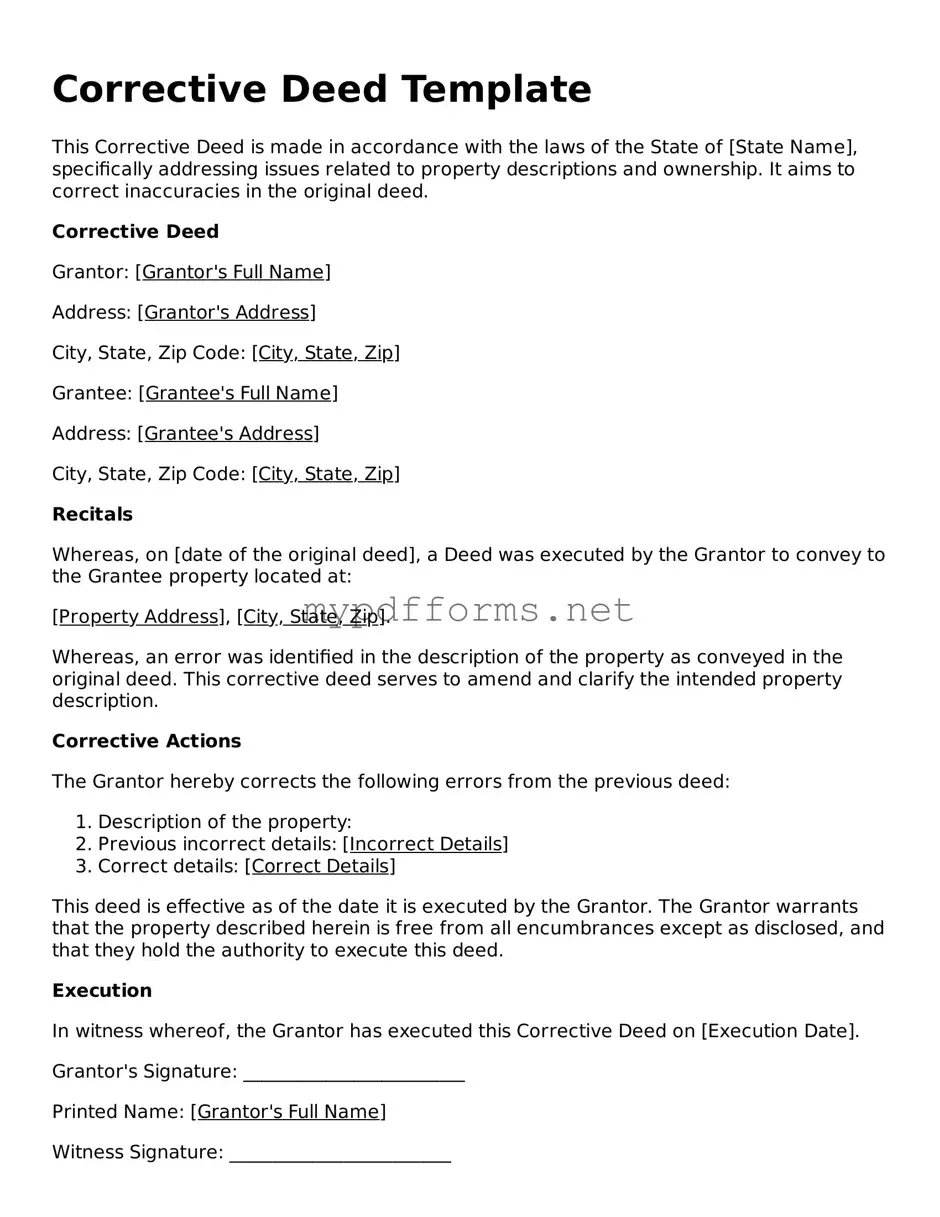The first document that is similar to the Corrective Deed is the Warranty Deed. A Warranty Deed provides a guarantee from the seller to the buyer that the property is free from any encumbrances or claims. Like the Corrective Deed, it aims to ensure that any issues with the title are addressed. Both documents serve to clarify ownership and confirm that the seller has the legal right to transfer the property, thereby providing peace of mind to the buyer.
Another document that shares similarities with the Corrective Deed is the Quitclaim Deed. This type of deed transfers whatever interest the grantor has in the property without making any warranties about the title. While a Quitclaim Deed does not provide the same level of assurance as a Warranty Deed, it can be used to correct errors in property records. Both documents are instrumental in rectifying ownership issues and ensuring that the title is clear for future transactions.
The Affidavit of Title is also comparable to the Corrective Deed. This document is a sworn statement by the seller affirming their ownership of the property and disclosing any potential issues related to the title. Similar to the Corrective Deed, the Affidavit of Title aims to provide transparency and protect the interests of the buyer. It serves as a formal declaration that can help clarify any discrepancies in the title history.
For those navigating the complexities of real estate transactions, understanding the various deed options is crucial. Among these, the Quitclaim Deed stands out for its simplicity in transferring property without warranties of title. This type of deed is particularly useful in familial situations or to address title issues. If you are looking to secure a Quitclaim Deed form, you can find a fillable version at https://quitclaimdocs.com/fillable-pennsylvania-quitclaim-deed/, making the process of property transfer more straightforward.
In addition, the Special Warranty Deed bears resemblance to the Corrective Deed. This type of deed offers a limited warranty, ensuring that the grantor is only responsible for claims arising during their ownership. Like the Corrective Deed, it is used to correct or clarify title issues, making it a useful tool in real estate transactions where past ownership may be in question.
Lastly, the Deed of Trust can also be seen as similar to the Corrective Deed. This document is used to secure a loan by transferring the property title to a trustee until the loan is paid off. While its primary function is different, both documents are involved in clarifying property ownership and ensuring that all parties involved understand their rights and obligations. The Deed of Trust can help prevent future disputes, much like the Corrective Deed aims to resolve existing ones.
